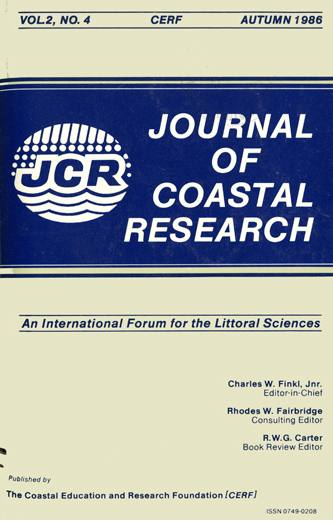New Jersey's Longshore Current Pattern
Keywords:
Circulation cells, longshore currents, rip-currentsAbstract
The regional longshore current pattern of New Jersey consists of a nodal zone separating longshore currents that flow away from the node in opposite directions. A similar pattern occurs in other coastal compartments in the Mid- Atlantic Bight. The pattern is likely caused by a combination of: (1) wave refraction over paleochannel topography on the continental shelf, (2) residual drift of intruding geostrophic and tidal currents, and (3) a balance in the long term between the seasonal effects of storm and fairweather swell processes. Superimposed on this regional pattern are smaller scaled circulation cells: (A) wave refraction around ebb tidal deltas (> 1 km), and (B) rip current circulation (< 1 km). Thus, the longshore current pattern is complex and is a function of this hierarchy of circulation cells. Shore protection plans should be designed to accommodate this highly variable (locally and on short time scales) yet quite persistent (regionally and on a long time scale) pattern of coastal currents.


